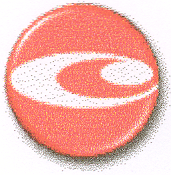
This story starts in the Great Britain, a car named Austin Maestro was made from 1983-1994. About 605.000 were made.
At the end of its career was the production changed to Bulgaria, the Rover Group started a joint venture with the Daru Group in a new factory in Varna, named Rodacar AD. About 2200 cars were made from ckd kits, from September 1995- April 1996. The story goes back to England where Parkway Services in Leabury bought the tooling from Bulgaria to finish British ckd kits. After that, the tooling was bought by a company named RDS International Engineering Co., Ltd. and sold in 1997 to China: to the Etsong (Yizheng) Tobacco (Group) Company in Qingdao, Shandong province.
Etsong also bought the intellectual property to produce the Maestro from RDS in 1998, RDS had acquired them from the Rover Group.
In total Etsong paid 11 million pounds.

The Etsong Group was not only active in tobacco, they had an industrial division, a construction company, a travel agency, a gymnasium and a football club. They wanted to start an automotive business and they planned to build a factory.
The intellectual property Etsong had bought included a series of models: Maestro Van, Maestro 5-door hatchback, Montego 4-door sedan and Montego 5-door station wagon. Technically it was possible also to produce a pickup, based on the van.

Etsong started the Etsong (Qingdao) Automotive Company and built the factory in Qingdao in March 1998 which was ready in 2000. The first two vans were made in May 1999, they got the designation QE6440, QE based on “Qingdao Etsong”. Instead of the British engines, Etsong used Chinese made Toyota 8A-FE 1342cc engines. Planned was an annual production of 60.000 vehicles, export was prepared for the van with a diesel engine made by the Italian company CMD (Construzione Motori Diesel) S.p.A.


A year later the hatchback followed. The hatchback was designated QE6400, and that showed the fact that the factory had no license to produce a car. To avoid this problem Etsong got a local license to produce a “5-seat bus, length 4m.”.



Already in January 2001 Etsong was looking for another project. They started talks with BMW (at that moment also negotiating with Brilliance) for the forming of a joint-venture to produce BMW 3-models. Initially Etsong would produce 5000 skd-kits (semi knocked down) BMW Series 3 sedan annually. But in the end BMW opted for Brilliance.

In 2001, Etsong brought in FAW, they took over the responsibility for the production. They integrated Etsong in the FAW Group. Now they could sell the vehicles legally all over China.
FAW continued the Maestro production. They got the name Jiefang and the van the designation CA1020, a five-seat version of the van was developed named CA6440UA and the five-door hatchback was named CA6400UA.

Technical details of the van: 4357x1704x1623mm, wheelbase 2559mm, engine FAW-Toyota 8A-FE, 67kW, speed 145km/h, weight 1015kg. The van got the same front bumper as the one Etsong had developed for the hatchback.


The details of the hatchback: 4049x1687x1443mm, wheelbase 2512mm, engine FAW Toyota 8A-FE, 63kW, speed 150km/h, weight 1370kg. Our dear Sam wrote about this version. Tycho also.

Very soon FAW, in May 2003, redesigned the front, taking the Montego example. They dropped the Jiefang name and the hatchback was called Lubao again.







FAW was not happy with the sales of the FAW Maestro products. And FAW wanted more control over the company. Next idea was a joint-venture, started in December 2003. FAW Group (60%) and Etsong Tobacco Company (40%) formed the FAW Etsong Qingdao Automobile Co. Ltd. The production capacity would be raised to 120.000-150.000 units.
FAW was thinking about replacing the already 20-years old Maestro models. FAW talked with Mazda about the production of the Mazda 2 within the joint venture. This initiative ended unsuccessful.

FAW did a last try to update the hatchback again. They added the front end of the last series of the Hongqi-Audi, the Shijixing.

But it didn’t work, sales stayed low. In June 2005 Etsong sold the factory to SAIC-GM Wuling. Since then, Wuling minivans and minibuses were made here.
Altogether Etsong made about 3000 Maestro’s.
What about the Montego? It was never produced by Etsong. The only note I saw was were two thumbnail pictures on a (long closed now) Etsong website, showing the sedan and the wagon in Qingdao. Test cars, British made or Chinese prototypes?


Those who think the story ends here are wrong, the incredible life of the Maestro continued three years later, when YEMA bought the tooling and rights. That will be a second story, later.
To finish this, a Chinese picture of a six headlights (!) version of the Montego. Reality, a photoshop or just a drawing?

Much has been written by Aronline:
Keith Adams: https://www.aronline.co.uk/cars/austin/maestro/lubao-ca6410/
Keith Adams: https://www.aronline.co.uk/cars/austin/maestro/etsong-lubao/
Keith Adams: https://www.aronline.co.uk/cars/austin/maestro/faw-lubao/

THIS IS A GREAT DAY FIRST CARNEWSCHINA IS BACK AND NOW WE GET A NEW ARTICLE!
[…] 2008 Yema bought the tooling and rights from Etsong to produce the Maestro Van. Both van versions were made, the two-seat commercial van and the […]